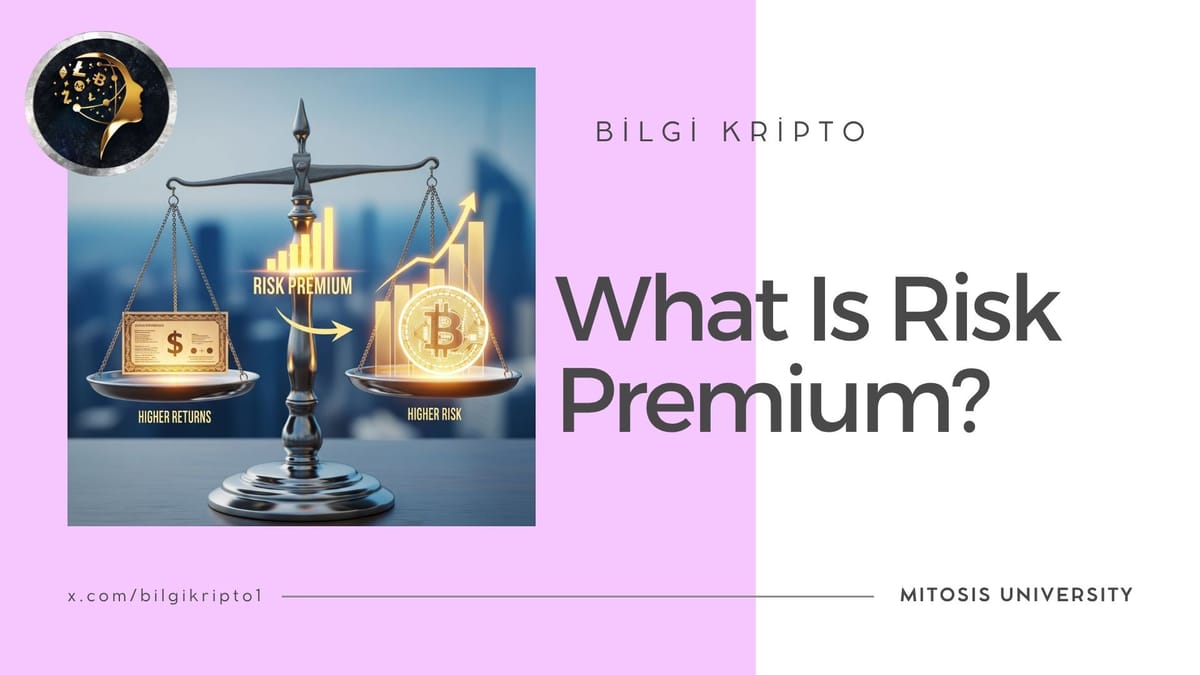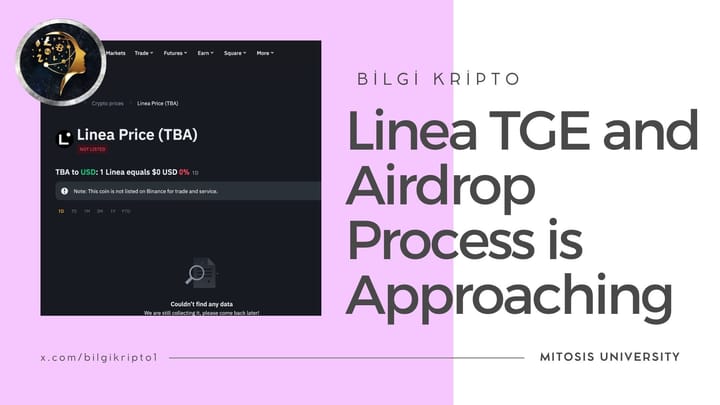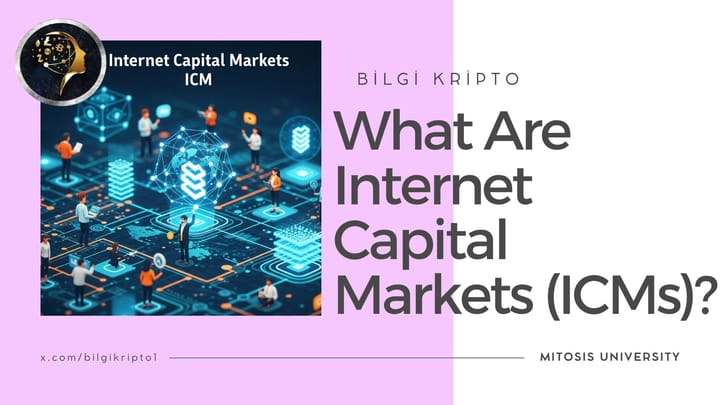What Is Risk Premium? The Key to Understanding the Cost of High Returns

In the investment world, while chasing big profits, one crucial truth is often overlooked: higher returns come with higher risk. Understanding this simple yet vital balance correctly determines the success of an investor. At the heart of this equation lies the risk premium. In this article, we delve into what a risk premium is, how it should be used in investment decisions, and its relationship with cryptocurrencies through clear examples.
Risk Premium: Definition and Core Logic
At its simplest, the risk premium is:
The additional return offered to an investor for choosing a riskier investment over a safer one.
So, if you decide to invest your money in a riskier venture, stock, or cryptocurrency project instead of placing it in a risk-free government bond, you expect an extra "reward" for taking that risk. That expected reward is called the risk premium.
Why Is This Concept Important?
The risk premium forces the investor to think consciously. Instead of investing in an asset just because it’s “profitable,” you ask yourself:
“How much risk am I taking to earn this return, and is the reward worth the risk?”

How Is Risk Premium Calculated?
Calculating the risk premium is quite straightforward:
Expected Return of Risky Asset − Return of Risk-Free Asset = Risk Premium
Example:
- A 10-year government bond yields 4% per year.
- A crypto project offers a 20% return in the same period.
- Risk premium: 20% - 4% = 16%
That 16% difference is the extra gain that convinces you to take on the additional risk.
Of course, one important note here is that the "expected return" is often just an estimate. Especially in crypto markets, these expectations may be driven by sentiment, trends, or speculation rather than fundamentals.
Why Are Risk Premiums Higher in Cryptocurrencies?
Cryptocurrency markets are among the most striking examples of the risk premium concept in action. Here’s why:
1. High Volatility
The prices of crypto assets can change drastically in a very short time. For example:
- Bitcoin can drop 10% in just a few days.
- An altcoin might surge 300% in one week and then crash by 90% the next.
This volatility leads investors to demand higher returns for the higher risks they’re taking.

2. Regulatory Uncertainty
Cryptocurrencies still exist in a legal gray area in many countries. This uncertainty makes investors more cautious and leads them to expect a higher risk premium.
3. Project Credibility and Fraud Risk
Crypto projects are often new and unaudited. “Rug pulls,” unlocked liquidity, and sudden developer wallet dumps are common. Investors, therefore, seek extra returns to compensate for these risks.
4. Liquidity Issues
Many altcoins have low trading volumes. This means investors may not be able to sell their coins whenever they want. This creates a liquidity risk premium.
Crypto-Specific Examples
Example 1: A New Altcoin Launch
A project is newly listed on a DEX (decentralized exchange). It has no reputation yet, but its roadmap looks solid. It's said to potentially return 50%. At the same time, BTC is only gaining 8%. The risk premium here is 42%.
But beware: That 42% extra return is just potential. If the project fails, you could lose your entire capital.
Example 2: Bitcoin vs. Ethereum Risk Premium
Bitcoin is considered the “digital gold” in crypto a more stable asset preferred by institutional investors. Ethereum, on the other hand, promises technological transformation and is more volatile.
An Ethereum investor takes on more risk compared to a Bitcoin investor but does so expecting a higher return. That difference is the risk premium.
Other Factors That Influence the Risk Premium
1. Macroeconomic Conditions
Inflation, interest rate decisions, and geopolitical events directly affect risk premiums. In crypto, especially interest rates and regulatory announcements can reshape risk perception and expected premiums.
2. Market Sentiment
Sentiment plays a massive role in crypto markets. A tweet, news article, or influencer opinion can quickly shift prices. This volatility causes real-time fluctuations in the risk premium.
3. Project History and Community
A project’s track record, transparency, and the strength of its community reduce perceived risk. This allows such projects to attract investors even with a lower risk premium.
How to Build an Investment Strategy Using Risk Premiums
Analyzing risk premiums helps diversify your portfolio and make sound decisions. Here are a few strategy tiers:
- Low risk premium low return: These assets bring stability to your portfolio (e.g., yield farming with stablecoins).
- Medium risk premium medium return: Long-term altcoin holdings.
- High risk premium high return: New project participation, IDOs, newly listed coins.
But remember: The higher the risk premium, the higher the potential for loss.
Conclusion: Risk Premium Is the Investor’s Compass
The risk premium is the invisible compass of the investment world. Especially in highly volatile markets like crypto, understanding this concept is essential for investors to act wisely.
While chasing profits, always account for the cost of those profits the risk. In crypto, the risk premium often forms the bridge between hope and reality.
Remember: A smart investor isn’t just someone who calculates gains they’re someone who carefully calculates the potential losses as well



Comments ()